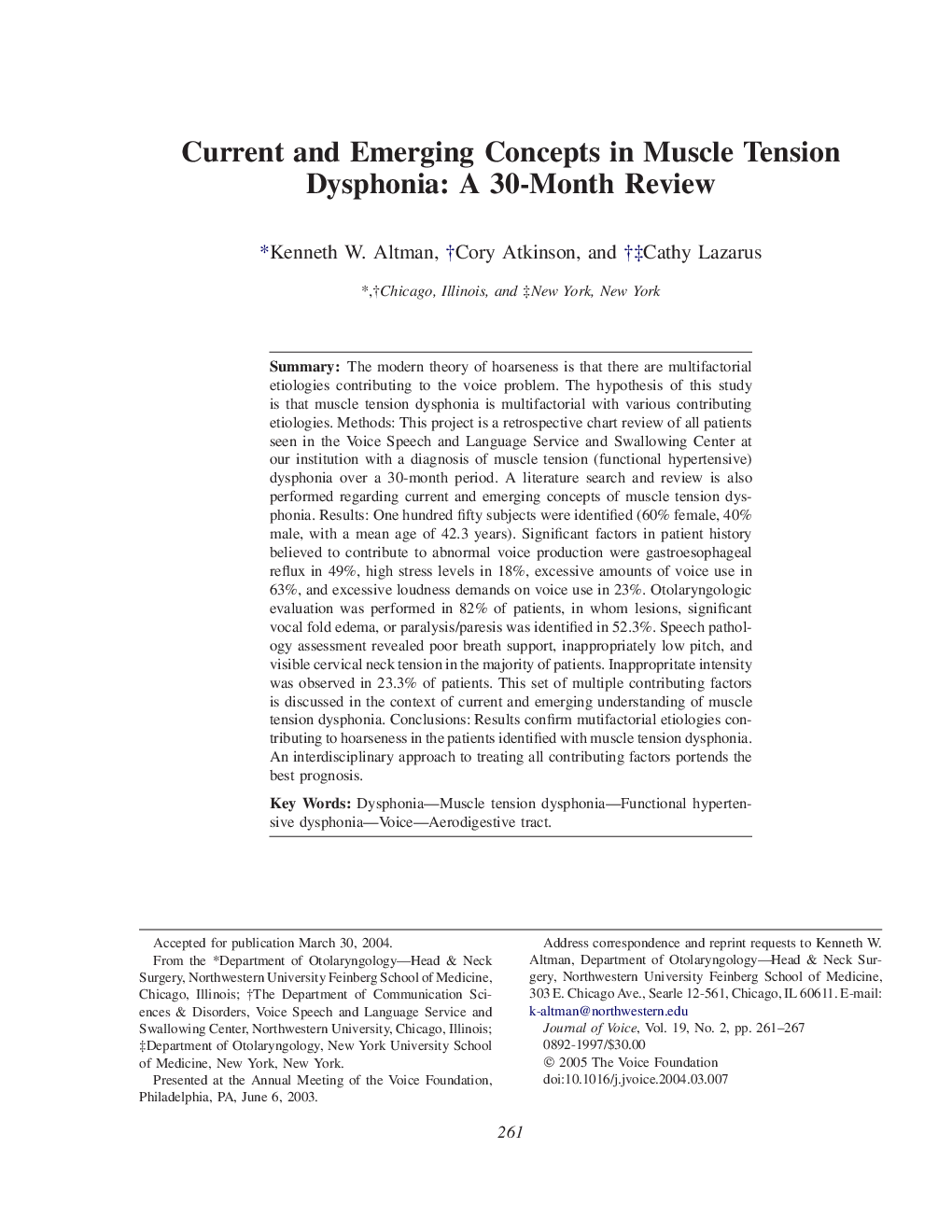| Article ID | Journal | Published Year | Pages | File Type |
|---|---|---|---|---|
| 10519769 | Journal of Voice | 2005 | 7 Pages |
Abstract
The modern theory of hoarseness is that there are multifactorial etiologies contributing to the voice problem. The hypothesis of this study is that muscle tension dysphonia is multifactorial with various contributing etiologies. Methods: This project is a retrospective chart review of all patients seen in the Voice Speech and Language Service and Swallowing Center at our institution with a diagnosis of muscle tension (functional hypertensive) dysphonia over a 30-month period. A literature search and review is also performed regarding current and emerging concepts of muscle tension dysphonia. Results: One hundred fifty subjects were identified (60% female, 40% male, with a mean age of 42.3 years). Significant factors in patient history believed to contribute to abnormal voice production were gastroesophageal reflux in 49%, high stress levels in 18%, excessive amounts of voice use in 63%, and excessive loudness demands on voice use in 23%. Otolaryngologic evaluation was performed in 82% of patients, in whom lesions, significant vocal fold edema, or paralysis/paresis was identified in 52.3%. Speech pathology assessment revealed poor breath support, inappropriately low pitch, and visible cervical neck tension in the majority of patients. Inappropritate intensity was observed in 23.3% of patients. This set of multiple contributing factors is discussed in the context of current and emerging understanding of muscle tension dysphonia. Conclusions: Results confirm mutifactorial etiologies contributing to hoarseness in the patients identified with muscle tension dysphonia. An interdisciplinary approach to treating all contributing factors portends the best prognosis.
Related Topics
Health Sciences
Medicine and Dentistry
Otorhinolaryngology and Facial Plastic Surgery
Authors
Kenneth W. Altman, Cory Atkinson, Cathy Lazarus,
